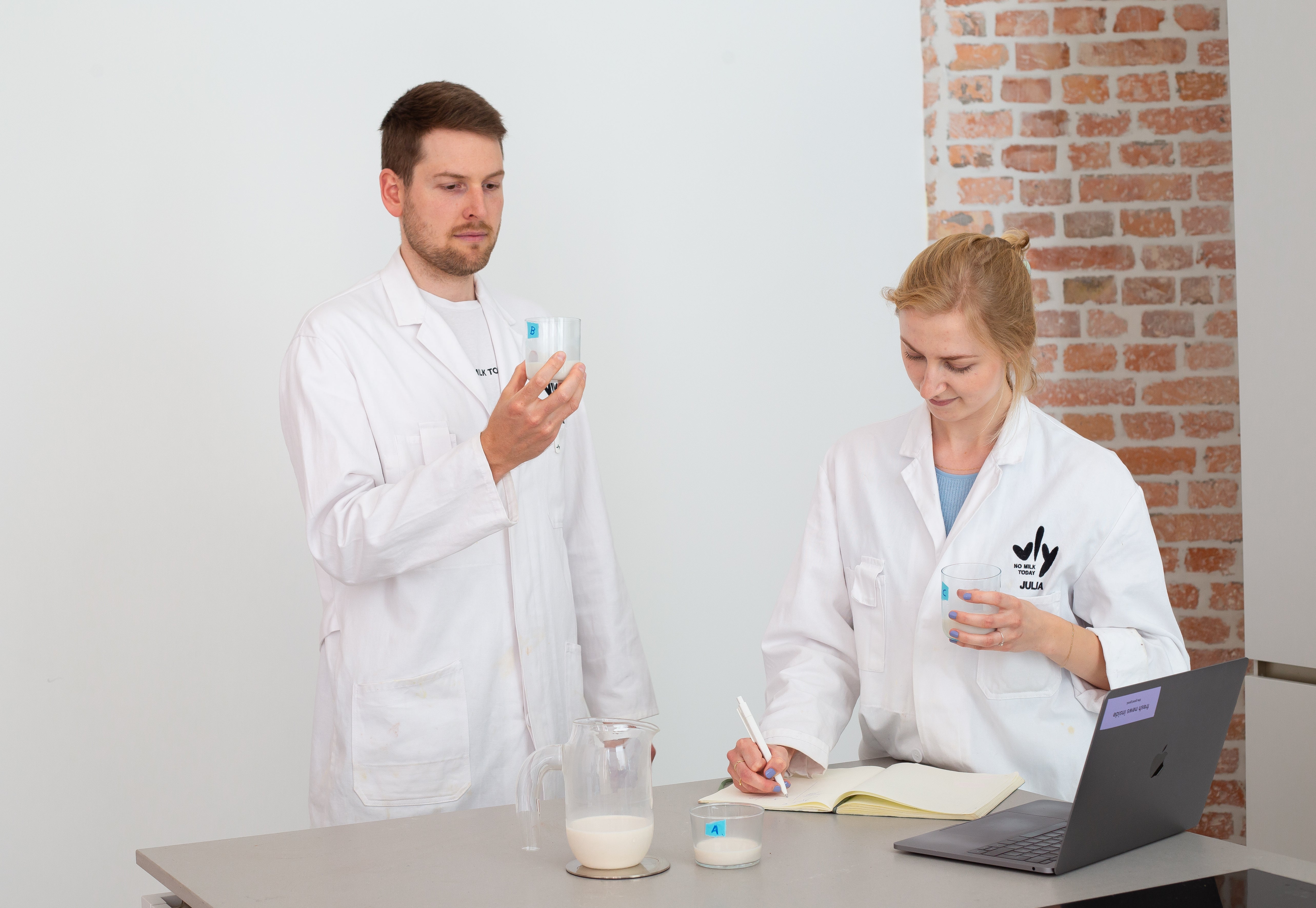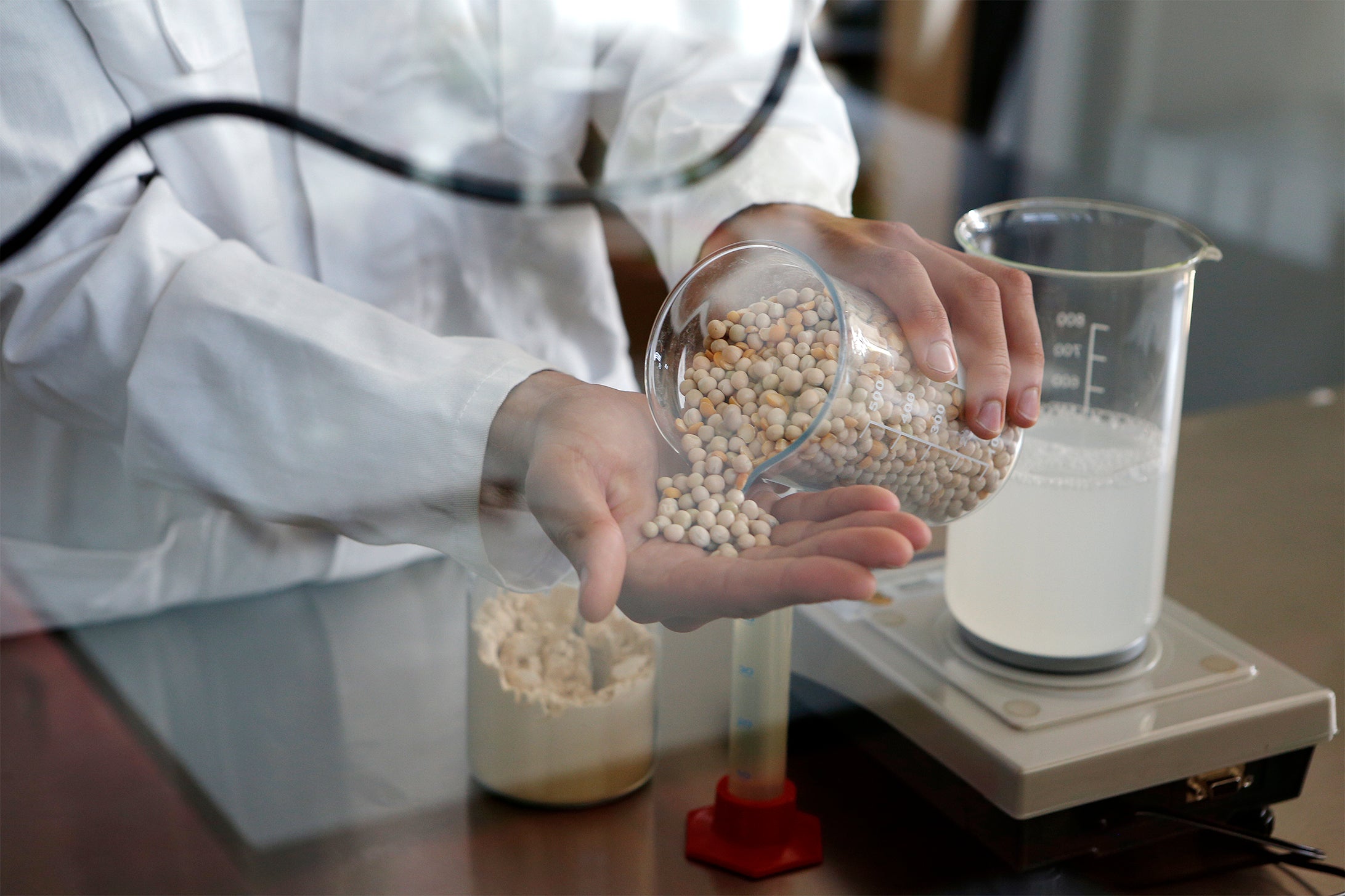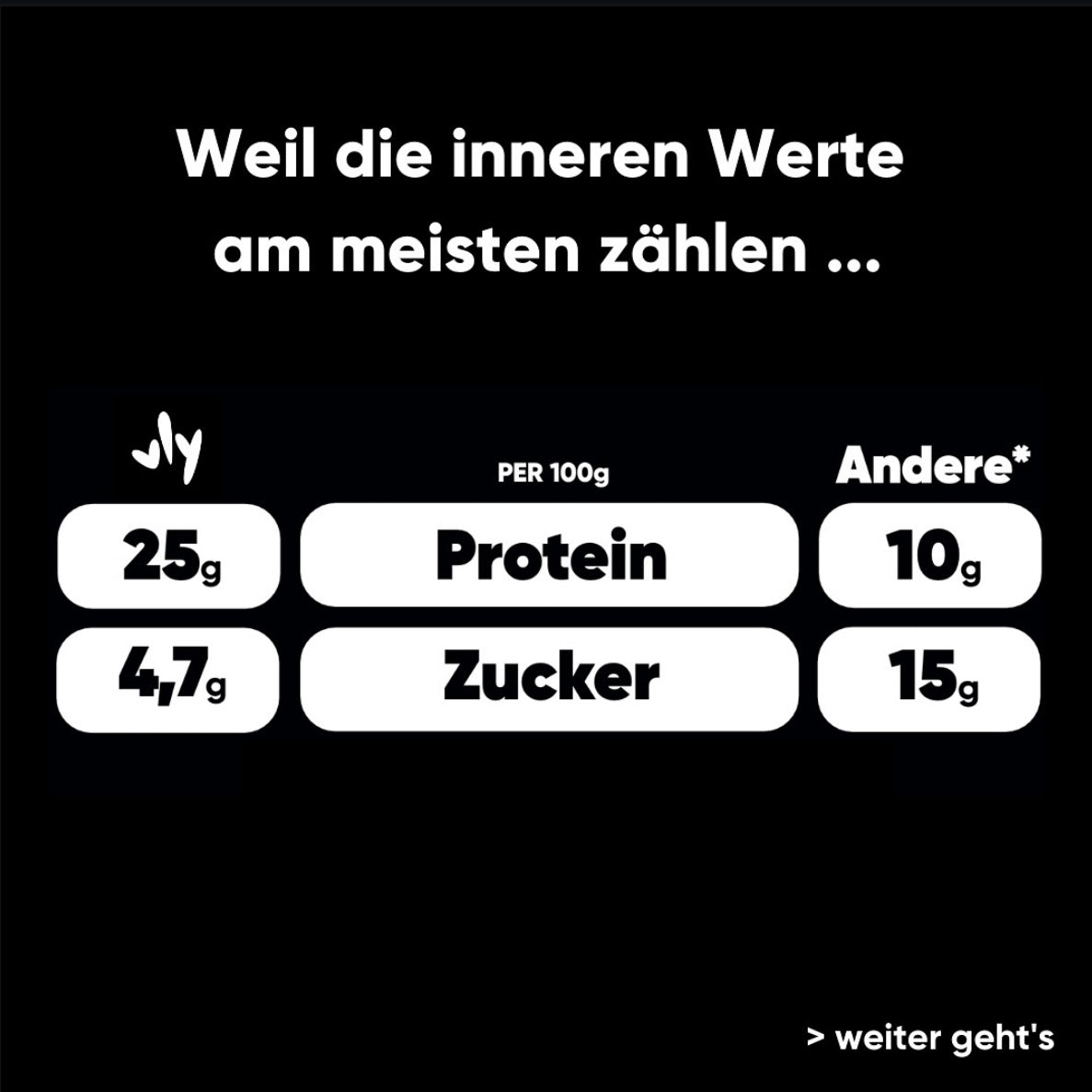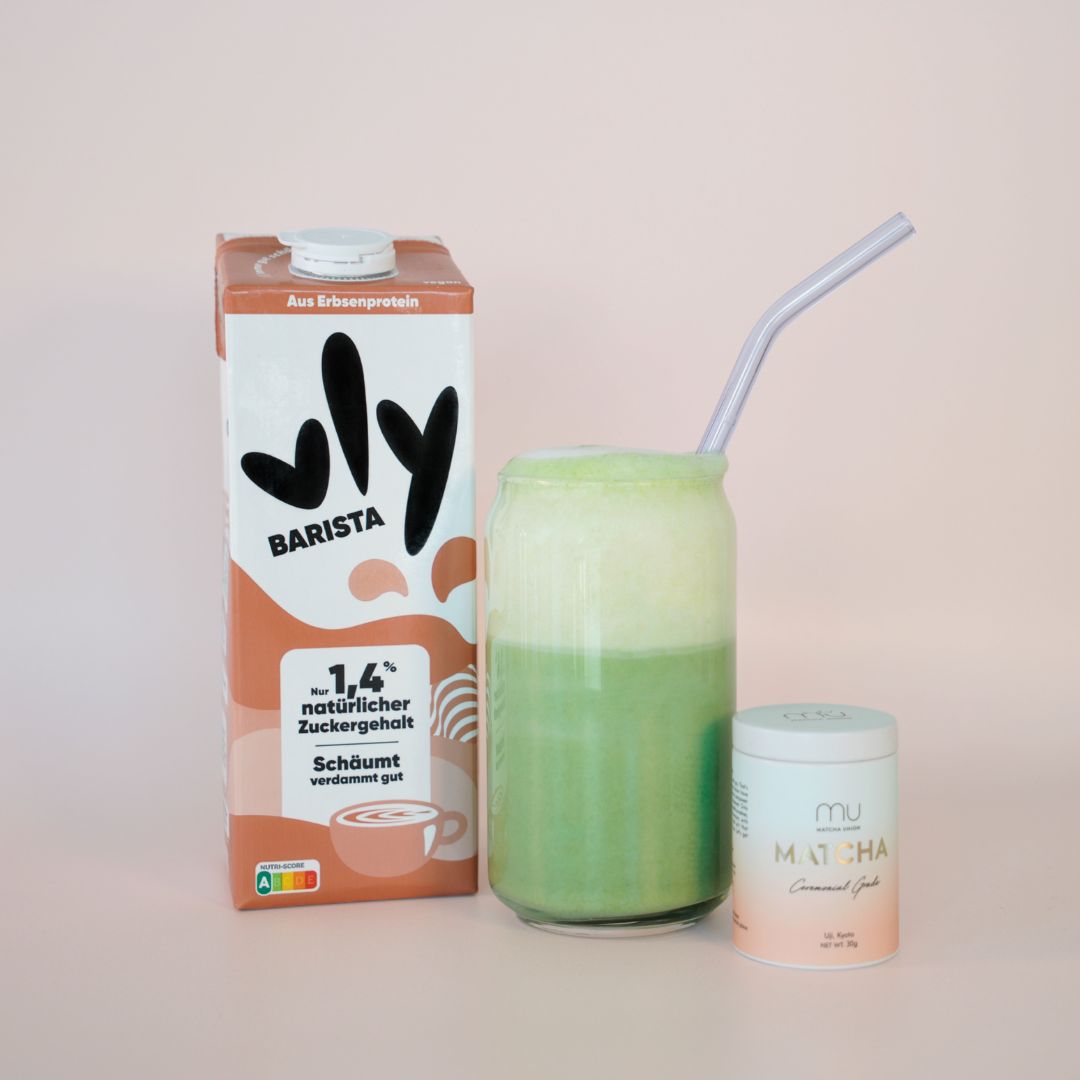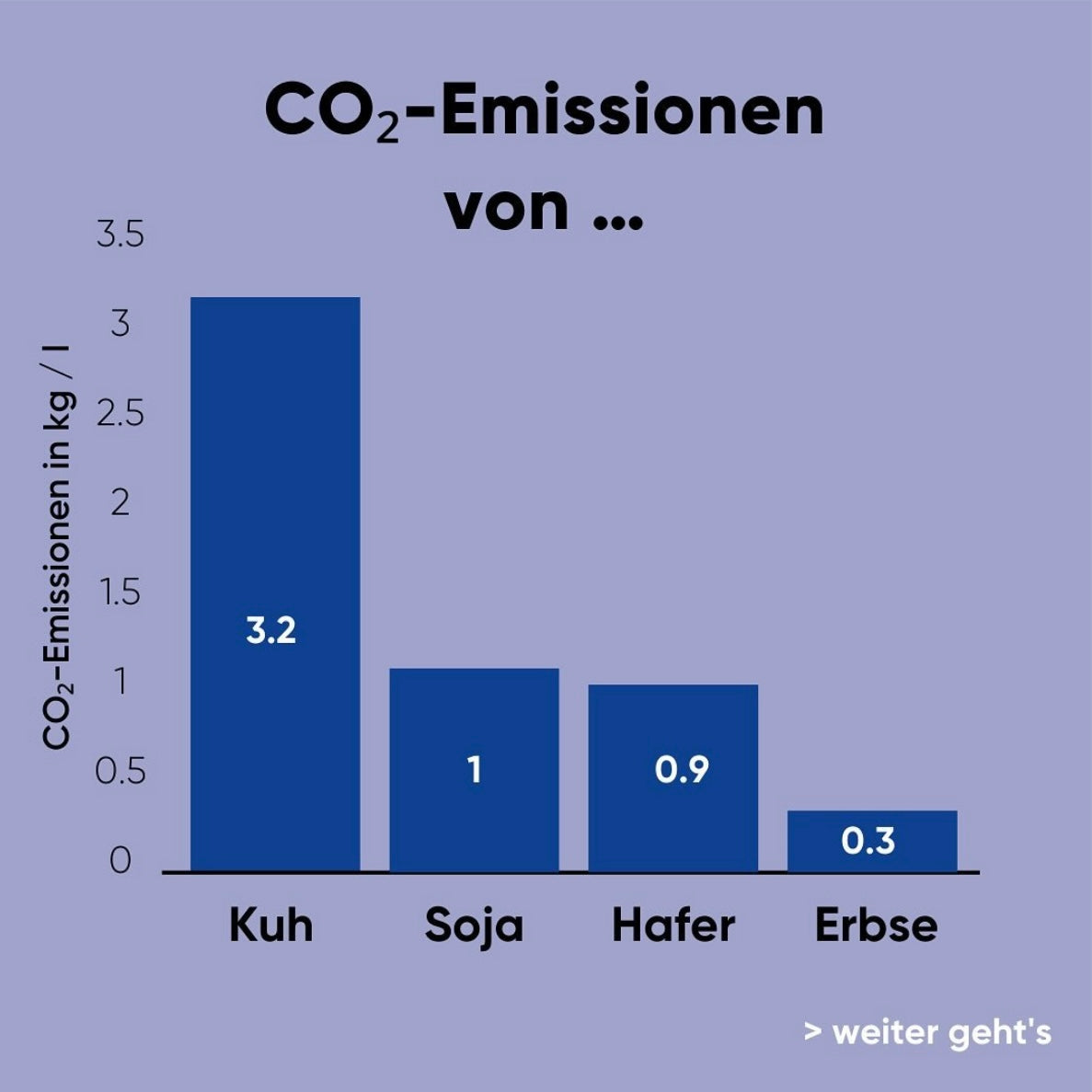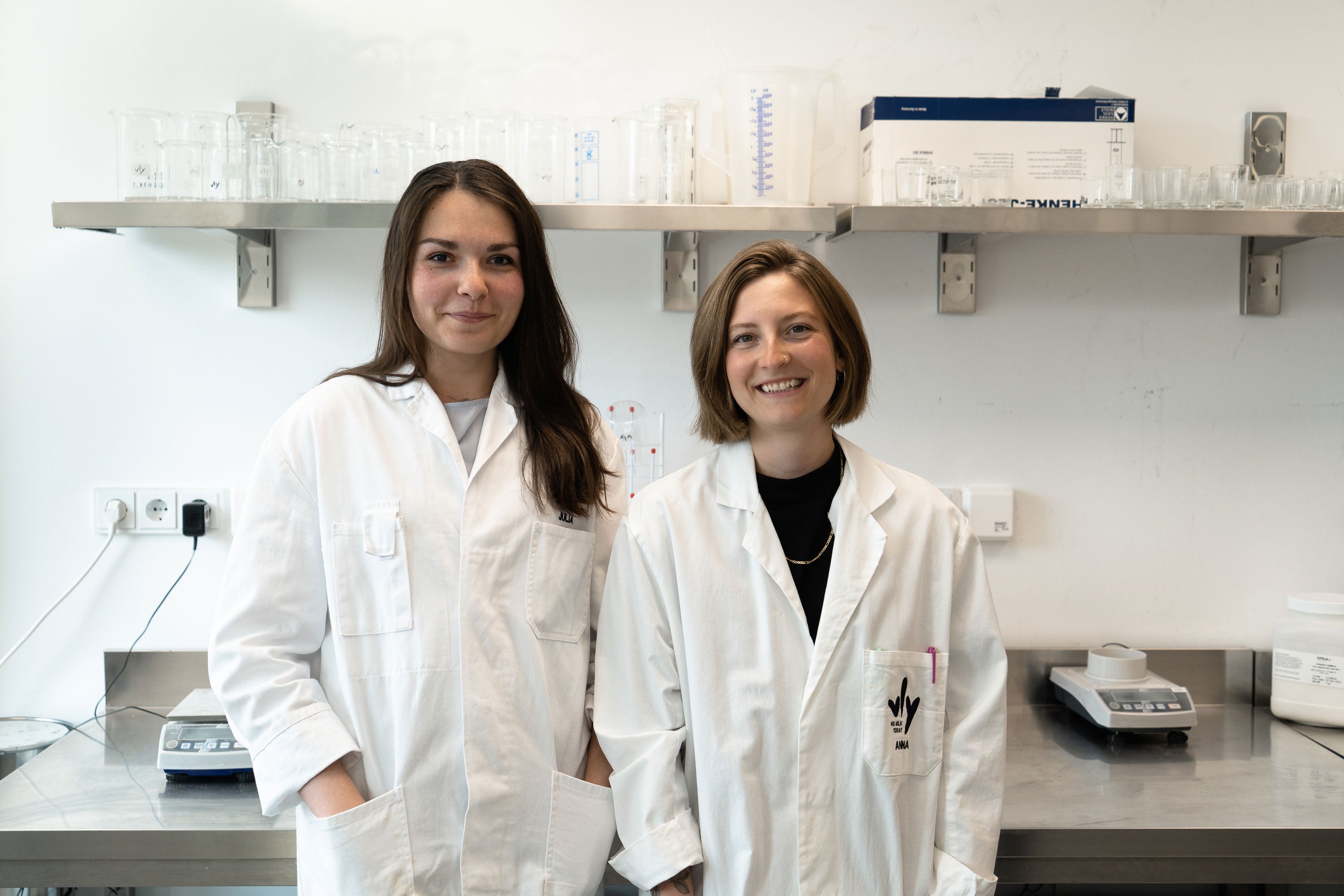
Fermentation: The power of transformation
An interview with the scientists behind our new yoghurt alternatives.
Fermentation has a long tradition in food preservation and preparation. Baking sourdough bread, brewing kombucha, making kimchi or pickling vegetables - fermentation is everywhere. But what exactly happens during fermentation? And what is the difference between vegetable and milk fermentation? We want to learn more about the power of fermentation and speak to the two people at vly who know it best: the microbiologist and the food technologist who developed our fermented yoghurt alternatives - Anna and Gaba.
Gabriela Biel, M.Sc. (left) & Anna Birke, Ph.D. (right) in the vly laboratory in Berlin.
Hi Anna & Gaba, you are both responsible for our new and very first fermented products. Before we get started, what's your favorite fermented food?
Anna: I especially like fermented drinks like water kefir and pasteurized kombucha. Kombucha is made by fermenting sugary tea. Water kefir is produced when the sugars of kefir cultures dissolved in water are fermented. You can also add fruit to this.
Gaba: For me it's sourdough bread and raspberry kombucha. Regular bread is made with baker's yeast, while sourdough bread requires a starter culture of lactic acid bacteria and wild yeast. So the starter culture is used to ferment the bread dough before baking. The result is a slightly more sour and flavorful bread.
You both work in vly's lab. One of you in product development and the other in the research and innovation team. What are your responsibilities there?
Gaba : I am a product developer at vly. That means I formulate and test hundreds of prototypes to develop a product that meets the taste of our consumers. Also, I have a background in microbiology and enjoy fermenting at home. When vly started with yoghurt alternatives, I took over the project.
Anna: I'm a microbiologist working as a fermentation scientist. When I joined vly, my first project was to screen different vegan starter cultures and adjust the base recipe to maximize fermentation efficiency. When Gaba took over the development of the yoghurt alternatives, I switched from product development to conducting and coordinating research projects that drive innovations in the field of fermentation and microbiology at vly.
💡 What are starter cultures? Starter cultures are microbial communities that are typically bacteria and/or yeast. For food, they are added to a recipe to control fermentation. The basic ingredients may already contain microbes, but by adding large numbers of the right microbes, the biochemical reactions that occur during fermentation can be controlled to some extent .
So that we can better understand how you developed the yoghurt alternatives, can you explain to us what fermentation actually is?
Anna: Put simply, fermentation describes a process that uses either cells, such as microorganisms, or enzymes, which are sort of the working power of a cell, to convert substance A (such as sugar) into substance B (such as lactic acid).
Yoghurt is a good product to illustrate how this works. You start with milk and use the power of fermentation to turn it into yoghurt. Can you explain to us what exactly is happening there?
Anna: Sure. We have used so-called lactic acid bacteria for our yoghurt alternatives. These are microorganisms used in the fermentation of food that can convert simple sugars into organic acids such as lactic acid. As a result, the yoghurt alternatives taste sour and fresh. In addition, the resulting lactic acid causes the pH value to drop, resulting in the creamy texture that is so typical of yoghurt. This is because the pea protein forms a gel network. Since the bacteria metabolize the sugar, i.e. "eat" it, so to speak, our yoghurt alternative is almost completely sugar-free in the end. The low pH of yogurt alternatives combined with other compounds produced by these beneficial lactic acid bacteria means they also have a long shelf life.
Since the bacteria metabolize the sugar, i.e. "eat" it, so to speak, our yoghurt alternative is almost completely sugar-free in the end.
You spent two years in the lab, doing research and putting a lot of time into fermentation and testing different prototypes. The fact that the development was so labour-intensive also has something to do with the state of research. Research has been going on in the field of milk and dairy products for decades. Not yet when working with vegetable proteins. What is the main difference between a vegetable fermentation process compared to milk fermentation?
Anna: The biggest differences are in the base we use. Milk is the classic base for milk yoghurts. It's different with our yoghurt alternatives. Here we have used a specially developed milk alternative made from vegetable protein, sugar and vegetable oil as the basis. The main carbohydrate source in milk is lactose. In our pea protein-based milk alternative, sucrose is the sugar available to the bacteria. In addition, the proteins contained in milk, especially casein and whey, are structurally very different from the various proteins in peas. Since proteins are very important for the bacteria, it took some time to optimize the fermentation conditions so that the bacteria were, so to speak, satisfied with the pea proteins.
Since proteins are very important for the bacteria, it took some time to optimize the fermentation conditions so that the bacteria were satisfied with the pea proteins, so to speak are.
Gaba : In addition, the plant-based starter cultures are not yet fully adapted to a wide range of different types of plant protein, so the fermentation time for yoghurt alternatives usually takes longer (up to 16 hours) than for milk yoghurt (6-8 hours) . Overall, the fermentation of yoghurt alternatives is slightly less efficient at acidification than milk yoghurt. We had to do a lot of experimentation and tweak our ingredient list to get the fermentation going as efficiently as possible. I think we managed that well.
What would you say was the biggest challenge with fermentation?
Gaba: The biggest challenge was getting the starter cultures to grow and using the nutrients from our base. In addition, different starter cultures lead to different taste results. So another major challenge was to choose starter cultures that would produce the most pleasing flavor while effectively lowering the pH.
Anna: The texture was also a problem because we used a very neutral pea protein source that had been extracted in such a way that it could no longer form a gel network. Most yogurt alternatives on the market contain stabilizers like pectins and starches. However, we were convinced that we could do without these additives. In the end we made it, but it was quite challenging.
The results are definitely delicious. Fermentation can be used to change the taste, texture and shelf life of food. This will definitely have an impact on the plant-based food industry. What do you think, what role can fermentation play in the future?
Gaba: Fermentation is already attracting a lot of interest in the area of plant-based food development. That's because of its numerous benefits - it can improve taste, texture, digestibility, and nutritional composition. What is already underway and will become even more important in the future is precision fermentation. It uses microorganisms to produce target compounds, such as vitamins, which can then be purified and used to fortify products.
That's because of its numerous benefits - it can improve taste, texture, digestibility, and nutritional composition.
Anna: Personally, I am convinced that fermentation is the key technology for future food security. And by that I don't mean making kimchi, but bioengineered fermentation, like the precision fermentation technology Gaba mentioned. It will allow us to make our food system as circular as possible, hopefully move away from unsustainable raw materials, and help us make tastier plant-based products that are nutritious, healthy and accessible to as many people as possible. It will also help us make the transition from a primarily animal to a primarily plant-based food system. This transition is critical to securing our future on this planet for at least two reasons: climate change and global health. I'm sure most people are aware of how our diet affects global warming and the associated climate crisis. However, I think fewer people are aware that livestock farming also affects global health in at least two different ways. The first aspect is zoonotic diseases, i.e. diseases caused by pathogens transmitted from animals to humans. Put simply, as long as we continue to raise and eat animals, we will also get their diseases. The second aspect is the emergence and spread of antimicrobial resistance (AMR for short), which is an ongoing and increasing global health threat. I've put together a few links for those who want to read more about it.
It will enable us to make our food system as circular as possible , hopefully move away from unsustainable raw materials, and help us make tastier plant-based products that are nutritious, healthy and accessible to as many people as possible .
Thank you for your time and the insights into your work. Finally, one last question: Which of our yoghurt alternatives is your favorite and how do you like to eat it?
Anna: Strawberry. I like to eat it pure.
Gaba: Mango! I eat mine with homemade granola and berries. It's just perfectly sour and super refreshing, which is great on a hot summer day. And in winter it brings back holiday memories. So it's actually perfect for any occasion.
If you're interested in learning more about how our dietary habits impact climate change and global health, Anna has put together some references and literature for you:
- How Food Habits Affect Climate Change: https://www.nytimes.com/interactive/2022/dining/climate-change-food-eating-habits.html
- Recommended book: On zoonotic diseases and the pathogens that cause them: https://www.davidquammen.com/spillover
- About AMR: https://www.who.int/news-room/fact-sheets/detail/antimicrobial-resistance .
- On the complex interactions between our food systems and emerging infectious diseases: https://www.nature.com/articles/s41893-019-0293-3.pdf

